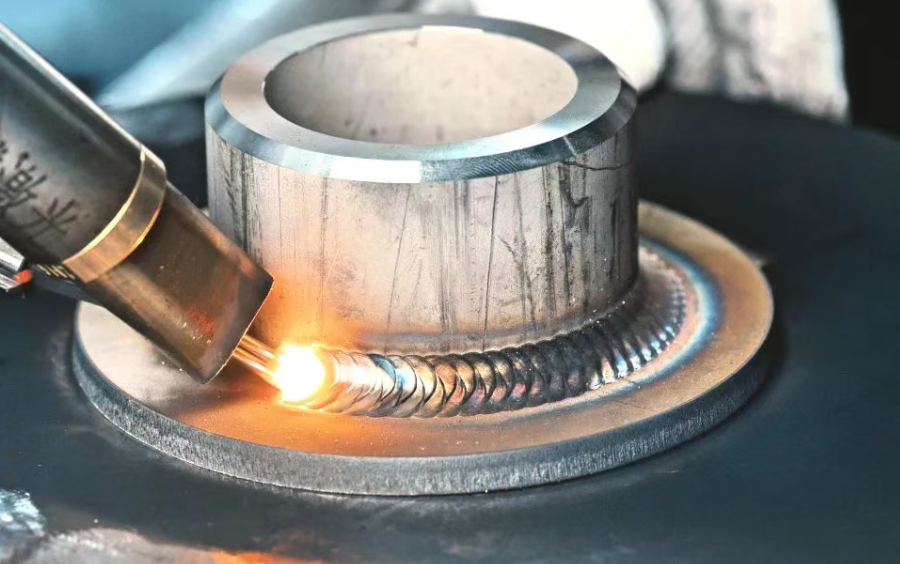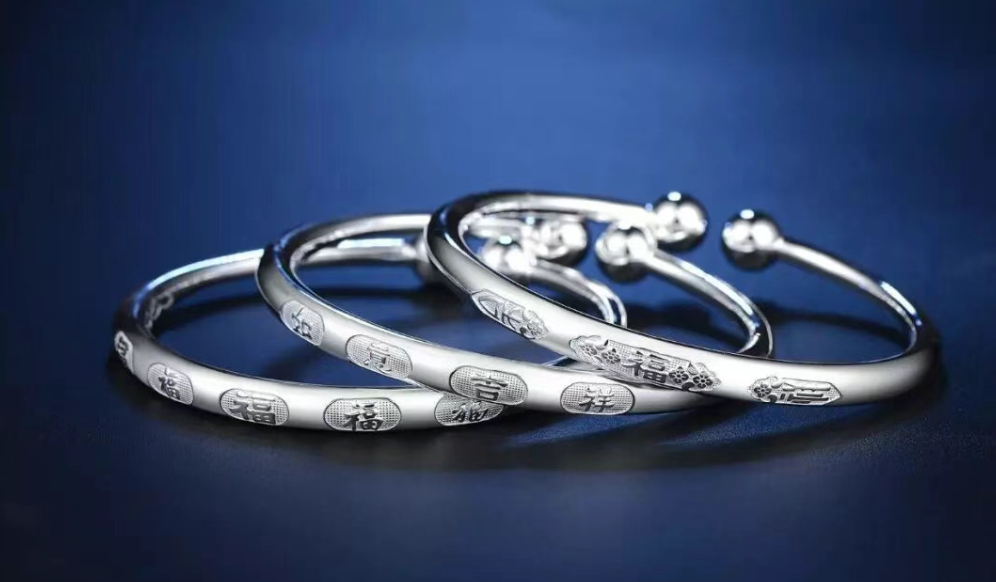
Spot welding is a high-speed and cost-effective joining method. It is suitable for connecting thin-plate components with lap joints that do not require airtightness. There are many types of spot welding, such as resistance spot welding, arc spot welding, adhesive spot welding, composite spot welding, and laser spot welding. Currently, resistance spot welding is widely used in production. Taking the automotive industry as an example, 3,000 to 4,000 weld spots are needed during the assembly of car body panel components, which requires 250 to 300 robots, along with supporting control systems and other auxiliary equipment. However, resistance spot welding has poor flexibility. With the rapid economic development, the update cycle of the geometric shapes and structures of automotive components has become very short. The upgrading of new products and models requires a new type of spot welding technology that is efficient and flexible. Therefore, laser spot welding technology has gradually become the focus of attention and is expected to be widely applied in automotive industrial production. In the aerospace field, laser spot welding is also being tested as an alternative technology. For a long time, lap joints of aerospace products have generally used riveting, which involves many production processes and heavy workload. With the increasing application of new materials such as aluminum alloys, titanium alloys, and composite materials, adopting new welding technologies to replace traditional joining methods has become a mainstream trend. This not only improves production efficiency but also reduces structural weight and meets new structural design requirements, which is of great significance for aerospace products. The high precision and high flexibility of laser spot welding give it significant advantages in practical production, especially in the aviation industry, where it can replace traditional processes such as resistance spot welding and riveting.
I. Definition and Characteristics of Laser Spot Welding
Definition
Laser spot welding refers to the process of melting and joining workpieces using a single laser pulse (t > 1ms) or a series of laser pulses at the same position.
Laser spot welding is basically similar to other laser welding processes; the only difference is that there is no relative displacement between the laser beam and the workpiece during spot welding. Laser spot welding is divided into two types: thermal conduction welding and keyhole welding. In thermal conduction spot welding, the laser can only melt the metal without vaporizing it. This method is more suitable for welding metals with a thickness of less than 0.5mm, such as Nd:YAG laser spot welding of electronic components. In keyhole laser spot welding, the laser can directly enter the interior of the material through the keyhole, increasing the utilization rate of laser energy and achieving a larger penetration depth. Traditional resistance spot welding melts workpieces to form weld spots using resistance heat generated by electric current, while the heat source of laser spot welding comes from laser radiation, resulting in significantly different weld spot shapes.
The adjustable parameters of laser spot welding generally include laser power, spot welding time, and defocus amount. For spot welding using pulse mode, parameters also include pulse waveform, frequency, and duty cycle. Among these, laser power mainly affects the penetration depth of the weld spot, while spot welding time has a greater impact on the lateral size of the weld spot. Generally, the longer the laser action time, the larger the size of the upper and lower surfaces of the weld spot and the size of the fusion surface. Changes in defocus amount mainly affect the spot diameter and energy density acting on the workpiece surface, thus having a significant impact on the overall shape of the weld spot.
Characteristics
- With laser as the heat source, spot welding offers high speed, high precision, low heat input, and minimal workpiece deformation.
- The degree of freedom in spot welding positions is greatly improved, enabling all-position spot welding and easily realizing single-sided spot welding, thus significantly enhancing the freedom of product design.
- Laser spot welding has low requirements for the size of lap joints. There are minimal restrictions on parameters such as lap amount of joints and distance between weld spots, and there is no need to consider the impact of current shunting.
- For welding of unequal-thickness plates, dissimilar materials, and special materials (aluminum alloys, galvanized sheets), laser spot welding performs better than traditional spot welding methods.
- It does not require a large number of auxiliary equipment, can quickly adapt to product changes, and meet market demands.

II. Defect Analysis of Laser Spot Welding
Cracks, pores, and sagging are the most common defects in laser spot welding, which are analyzed one by one below.
1. Cracks
Cracks are divided into surface cracks and longitudinal cracks. The heating and cooling rates during laser spot welding are very fast, resulting in a large temperature gradient between the heated area and the surrounding metal, which easily leads to crack formation. The occurrence of cracks is closely related to the material; for example, aluminum alloys have a much higher tendency to crack during laser spot welding than stainless steel. An effective method to suppress crack formation is to optimize the pulse waveform to control the cooling rate of the metal solidification process and reduce internal stress.
2. Pores
Porous defects (pores) in laser spot welds can be divided into small pores and large pores. Small pores are mainly caused by the decrease in the solubility of hydrogen in liquid metal during metal solidification, as well as the rapid evaporation of metal in the keyhole and the disturbance of the molten pool. Large pores are mainly due to the too-fast cooling rate during laser spot welding, which leaves insufficient time for the metal around the keyhole to backfill. Generally, small pores are prone to form in long-pulse spot welding, while large pores are likely to occur in short-pulse spot welding.
There are two locations where pores are most likely to appear in laser spot welding: one is near the fusion zone in the middle of the weld spot, and the other is at the root of the weld. Melting images captured by X-ray show that pores near the fusion zone are mainly caused by necking when the keyhole closes; for pores at the weld root, they are mainly formed by the collapse of the keyhole due to the rapid disappearance of the laser after keyhole formation.
3. Sagging
Sagging is an obvious phenomenon in laser spot welding. The central sagging on the weld spot surface and the metal accumulation around it are caused by the recoil force generated by metal vaporization pushing the liquid metal to the weld spot surface. During the cooling process, the accumulated metal on the surface solidifies quickly and cannot be fully backfilled. In addition, material loss caused by rapid metal evaporation and spattering is another factor contributing to central sagging. Pulse time has a significant impact on both the sagging of the weld spot surface and the formation of pores. Satisfactory weld spots can be obtained by optimizing the pulse waveform and time.
4. Impact of Defocus Amount on Weld Spots
Changes in defocus amount directly alter the spot diameter and energy density. When the defocus amount increases in both the negative and positive directions, it means the spot diameter increases and the energy density decreases. During laser spot welding, there is a certain corresponding relationship between the spot diameter and the size of the initial keyhole formed by the laser incident on the test piece, while the energy density determines the expansion rate of the molten pool. When the absolute value of the defocus amount is small, the laser spot diameter is small, the laser power density is high, and the expansion rate of the weld spot molten pool is fast, but the diameter of the initial keyhole is small. On the contrary, when the defocus amount is large, the diameter of the initial keyhole is large, but the expansion rate of the molten pool slows down, and the resulting weld spot size may not be large. Therefore, during the change of defocus amount, the comprehensive effect of spot diameter and surface power density of the weld spot determines the size of the weld spot.
III. Application of Laser Spot Welding Technology
Laser spot welding features high speed, large penetration depth, minimal deformation, and can be performed at room temperature or under special conditions with simple welding equipment. In addition, the emergence of high-frequency pulse lasers (with a frequency higher than 40 pulses per second) has enabled the wide application of laser spot welding in the assembly and welding of micro and small components in mass automated production. When welding small electronic components that require a small heat-affected zone—such as the connection between glass and metal, the connection of joints in heat-sensitive semiconductor circuits, and the connection between different metals in wires—laser spot welding is more advantageous than traditional spot welding processes (e.g., resistance spot welding), with pollution-free weld spots and high welding quality. Figure 6-60 shows an application example of laser spot welding in the production of automotive headlights: a 500W solid-state pulse laser generates four similar weld spots with a very high pulse frequency.
When performing high-precision spot welding on microstructures using high pulse energy, pulsed Nd:YAG lasers have technical and economic advantages. In most industrial spot welding applications, pulsed solid-state lasers with an average power of 50W and a pulse power > 2kW are basically used. The laser can act directly on the workpiece through optical fibers or combined focusing lenses.
Laser spot welding is applicable to a wide range of materials. For example, when spot welding Li batteries, using Nd:YAG laser spot welding technology to connect different metals is more efficient than TIG welding and resistance spot welding. In particular, since optical fibers are used to transmit lasers during production, it is convenient to move quickly and flexibly between various workbenches.
In summary, laser spot welding has the following characteristics:
- With the increase in laser power, the surface diameter of the weld spot fluctuates up and down, while the diameter of the fusion surface and the lower surface increases slowly. The change in the cross-sectional shape of the weld spot is not obvious. As the duration increases, the size of the weld spot increases rapidly, and the change rate of the fusion surface diameter is greater than that of the upper and lower surface diameters. The change in defocus amount has a significant impact on the size of the weld spot. It directly alters the spot diameter and laser power density, and the comprehensive effect of these two factors determines the size of the weld spot.
- In the case of full penetration, there is obvious sagging on the surface of the laser spot weld. With the increase in laser power and duration, the sagging depth on the weld spot surface increases. When the duration or gap size is large, the lower surface may also show indentation.
- As the gap increases, the overall deformation of the weld spot, central sagging, and indentation become obvious. The fusion surface shrinks, and the strength decreases rapidly. Currently, in the welding of resistors, batteries, and the electronics field, the process of welding two spots simultaneously is commonly used, which usually adopts a design with two laser light sources.
Post time:
Oct-27-2025


















